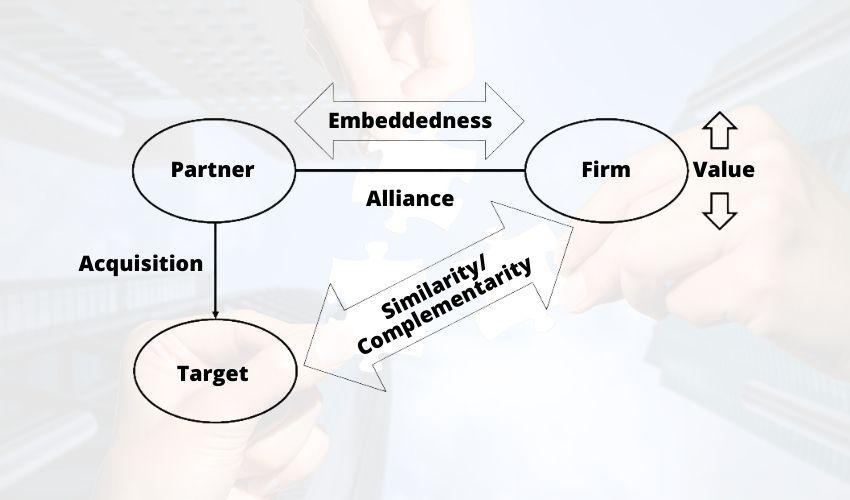
Beware of Your Partners' Acquisitions
Alliances and acquisitions are often considered separately and managed by different units, but Dovev Lavie (Department of Management and Technology) warns that "alliance managers should monitor their partners' acquisitions and study their acquisition targets in order to identify competitive threats and opportunities for synergies. Similarly, managers in the acquiring organization should assess the implications of their acquisitions for their alliance portfolio."
In a study forthcoming in the Strategic Management Journal, co-authored with Randi Lunnan and Binh Minh T. Truong (BI Norwegian Business School), Professor Lavie finds that an acquisition initiated by a firm's alliance partner affects the value that the firm can create and capture from its alliance with the acquiring partner.
The effect depends on the relation between the firm's business and the business of the acquired company – namely, when the acquired target competes with the firm (business similarity), the value of the alliance declines, and when the target and firm's businesses are complementary, the alliance creates more value.

The authors analyze 361 firms and their 590 alliances with 91 partners that acquired 164 targets during 2000–2016 and measure value creation (or destruction) by the firm's cumulative abnormal return (CAR) around the announcement of the partner's acquisition, i.e. the departure of stock prices from their trend in the days around the announcement. "Our CAR measure reflects the investors' expectations about the added value that the alliance will potentially create for the firm following the acquisition," explains Prof. Lavie.
Their findings furnish support for the expected, opposing effects of business similarity and complementarity with the target.
However, contrary to what could be inferred from previous literature, the strength of the relation between the firm and the acquiring partner (in academic terms, their relational embeddedness) makes things worse: the loss of value in case of business similarity with the target is larger and the gain in case of business complementarity is smaller.
"One possible interpretation of these unexpected findings is that if a partner acquires a target that competes with the firm, this acquisition indicates the breakdown of trust in their embedded relationship," says Prof. Lavie, "and creates a risk of unintended knowledge spillover, which undermines the firm's ability to create and capture value from the alliance. Furthermore, we infer that relation-specific routines that typically facilitate value creation in embedded relationships can become dysfunctional, and their rigidity may prevent the firm from accessing and leveraging the complementary resources of the partner's acquisition target."
Accordingly, managers should either leverage their firm's embedded relationship to anticipate and convince the partner to forgo adversarial acquisitions or terminate their alliance before the hazards materialize. If the acquisition introduces potential synergies, alliance managers should maintain sufficient flexibility to modify relation-specific routines in their alliance, which otherwise make it difficult to combine the target's resources in the alliance.
Dovev Lavie, Randi Lunnan, Binh Minh T. Truong, "How does a partner's acquisition affect the value of the firm's alliance with that partner?", Strategic Management Journal, Early View, DOI: https://doi.org/10.1002/smj.3389.
How Does a Partner’s Acquisition Affect the Value of the Firm’s Alliance with That Partner?
